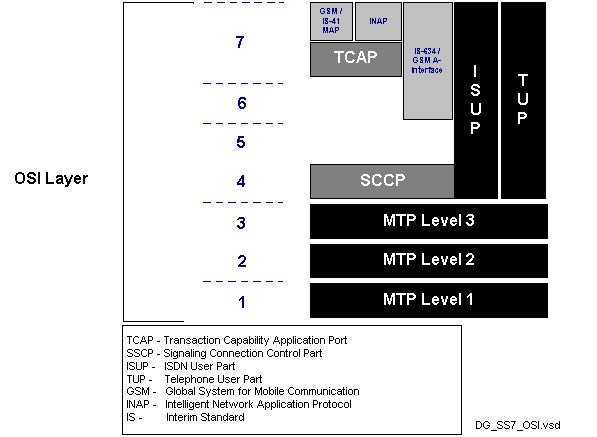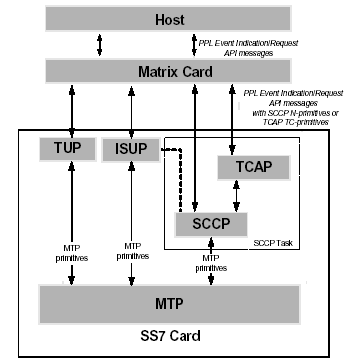
You are here: CSP Developer’s Guide: Common Channel Signaling > 6 SCCP/TCAP > Introduction to SCCP/TCAP

Overview
SCCP and TCAP support offers advanced routing, data transfer, and management control features. Signaling Connection Control Part (SCCP) provides both connectionless and connection-oriented network services above MTP Level 3. Transaction Capabilities Application Part (TCAP) provides transaction and remote operation capabilities to a large variety of applications distributed over the Excel platform and service centers in the network. The Excel SCCP/TCAP implementation supports the following connectionless services:
• Specialized Routing
• Data Transfer
• Management Control
The SCCP layer and TCAP layer services are directly accessible through the SCCP and TCAP primitives. The option of using SCCP services only or using both SCCP and TCAP services is configurable for each subsystem. This allows users to choose the appropriate protocol interface for customized applications.
SCCP
Together SCCP and MTP are used as the network layer for TCAP-based services. For each component of an SS7 network, SCCP provides a different service to its user which is referred to as the subsystem.
• In a Service Control Point (SCP), the sub-system of the SCCP is a database.
• For an SSP, the sub-system of the SCCP is an application software package.
• For a Signal Transfer Point (STP), the SCCP also provides Global Title Translation.
TCAP
TCAP enables the deployment of advanced intelligent network services by supporting non-circuit related information exchange between signaling points using the SCCP connectionless service. TCAP provides the framework to retrieve information or invoke remote operations.
TCAP offers the means for end users in the SS7 network to query another end office and acts as the software interface between an SS7 office and database services in order to obtain data from the SS7 network.
Figure 6-1 Mapping SS7 stack to OSI layers

SCCP/TCAP in the Excel Architecture
SCCP and TCAP provide the services to the host by a set of SCCP primitives and a set of TCAP primitives which are carried in the PPL Event Request and PPL Event Indication API messages.
For higher performance, TCAP/SCCP primitives can be sent through the SS7 card directly to the host using an Ethernet connection.
Figure 6-2 Direct host connection

The host can send PPL Event Request messages to the Matrix Controller. In turn, the Matrix Controller can send PPL Event Indications messages to the host. The approach may be needed if a single host is controlling the CSP.
Figure 6-3 Host connection through Matrix Controller

ITU and ASNI/Telecordia Standards - Versions Supported
The following are the standards versions that the SCCP/TCAP implementation supports:
• ANSI T1.114 TCAP 2000 and Telecordia GR-246 issue 7
• ANSI T1.112 SCCP 2000 and Telecordia GR-246 issue 7